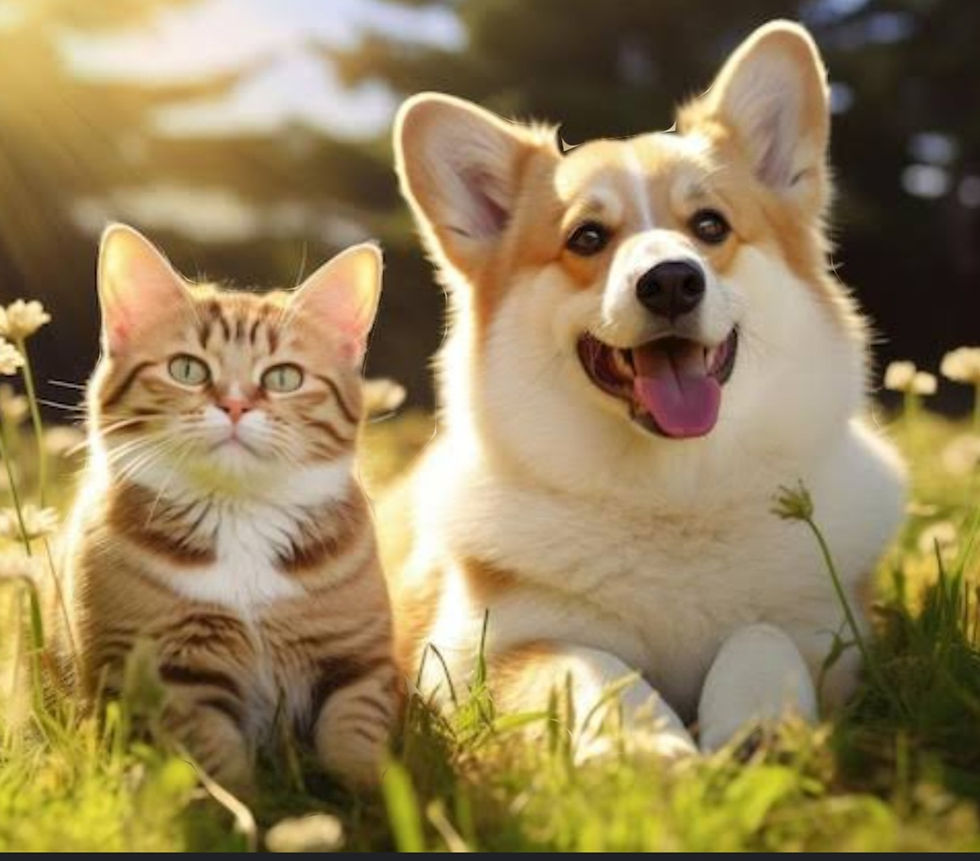DANGERS OF GRASS SEEDS ..... DOGS
- Free Range Pooches NZ

- Feb 4, 2022
- 3 min read
Updated: Aug 8, 2024
Grass seeds
Seemingly innocent but dangerous and potentially lethal, these little brutes can easily get caught on your pet’s fur and embed themselves to their skin very quickly. If left untreated, grass seeds can cause a whole heap of problems. These problems range across the spectrum from a minor irritation all the way to the worst consequence imaginable.
Grass seeds are great carriers of bacteria and once they penetrate the skin, infection is inevitable. If left untreated, the infection could spread or the seed could move around internally and cause severe internal damage. Once they are inside the body, there is no treatment plan other than surgery to find them and remove them along with prolonged use of antibiotics and antifungals to prevent reinfection at the site of the surgery. It’s a lot of avoidable stress.

What does a grass seed look like? Grass seeds are tiny, generally 1-2cm in length, and they come in a variety of shapes. They are usually dart shaped and are made with spikes in such a way that once it pokes through the outer skin barrier, it easily lets gravity push it in further. One end of it is very pointy and could very easily penetrate the skin whilst the remaining bit is the tail that expands the seed’s surface area to increase the chance of it being picked up by a being or by wind.

What are the symptoms? Depending on where the grass seed penetrates or enters the body, a variety of different symptoms would make it apparent that your dog or cat may have a grass seed invasion. Keep in mind, wherever it breaks the skin, there will be an infection on the skin including redness and swelling. If you spot this then immediately take action and head straight to the vet.

How do I keep grass seeds away from my pet? Whilst there isn’t much that can be done to prevent the disastrous effects of grass seeds from affecting your pet, there are a couple of things that could go a long way. Firstly, keep your pet away from long grassy areas and dry grassy areas since the seeds can catch on to their coat and skin very easily and are present in massive proportions within these areas. You should also keep your own lawn mowed to add a substantial layer of protection at home. Keep it as tidy as possible and sweep away any plant materials or offending seeds to reduce the risk even more. In addition to that, make it a daily routine to groom their hair as that is one of the best ways to identify any potential infection spots. Keep in mind that any matts could be concealing grass seeds. Carefully trawl through and evaluate their eyes, ears, nose, armpits, groin and the middle of their toes – which is where the seeds get lodged very often. You should especially do this every time they come back from walks or have gone through grassy areas to be cautious and early at spotting and swatting them out. You could even just cut their hair short to reduce the surface area upon which the seeds could attach themselves. Most importantly though, you must always be on a look out for these symptoms, particularly during the spring and summer months. If they shake their head a lot, frequently sneeze, have become sluggish and lazy, etc. they may have a grass seed somewhere so get to it sooner rather than later because later isn’t a fun nor healthy track to go down. They may be small but they can do a lot. Be vigilant and get those grass seeds before they get your pet.
Vet bills can be very expensive
We highly recommend Pet Insurance
Click the link below to get your best quote
All our puppies at Free Range Pooches go home with PD Insurance.






Comments